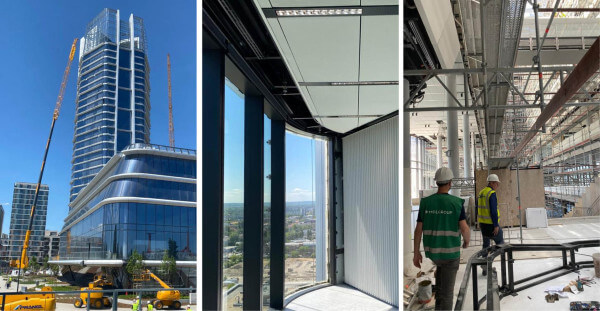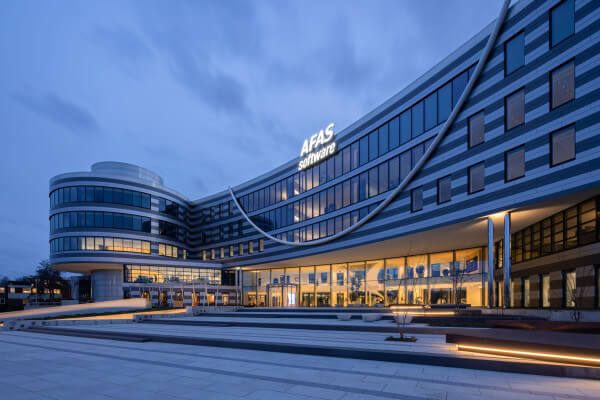One Piece Flow record attempt
One Piece Flow: switch your improvement engine on!
Every intelligent organisation is concerned with improvement. You want, after all, to get the best results for the least effort. But improving existing patterns in an organisation is a complex process, never mind motivating staff to take part and give shape to improvement rounds. Inteco, a producer of climate ceilings, discovered a powerful and practical way of involving staff: a One Piece Flow experiment. With this experiment, the team was able to reduce the duration of the process by at least 99% while inspiring staff.
There is a video of the experiment below, but read the article there as well.
(In the setting menu of the video you can turn on the English translation.)
Like many manufacturers, Inteco in Boxtel works with large stocks and long lead times. This means that it is possible to match flexible demand while delivering the required quality. Then the director Paul Ruijgrok came across the philosophy of the Arpa Learn Institute. Paul Ruijgrok: “The Lean or Learn way of looking at things is fundamentally different. Stock is regarded as a time and money wasting phenomenon that you have to avoid as much as possible. My team and I have been applying the Lean methodology for some time now. We were ready to take new steps in that process.”
Keeping products in flow
Inteco set up a One Piece Flow experiment with Arpa. One Piece Flow means that you follow a product from start to finish, that you carry out all processes immediately after each other and that you make the product ready for delivery. You then start on the next product. This is fundamentally different (and faster) than working in batches where a certain amount of material undergoes process A, is stored as intermediate stock, is then subjected to process B, is stored again, and so on. The thinking is that storage and keeping stock mean extra tasks, don’t contribute anything and make errors more likely. In One Piece Flow, you don’t have these disadvantages.
The preparation
Ruijgrok: “To see whether the One Piece Flow method could be useful for our organisation, we decided to try it out. We decided to stop production for a day and to involve all the employees in the experiment – office as well as production staff. In order to have control of the process, we first made a VSM or Value Stream Map. This is where you follow one product through the entire production line and chart every process and stock step. This showed that a ceiling plate had a lead time of 14 days with us. Most of this time was ‘waiting’ as stock or intermediate stock.”
The experiment
In the experiment, Inteco compared One Piece Flow with the usual way of working. Four orders of ten panels were produced in the morning in the usual way: 10 pieces from stock, process A, back to stock, 10 pieces from stock, process B, back to stock etc., until all the processes had been completed and the products were made ready for transport. Ruijgrok: “We worked hard, pallets were taken away and brought in and everything was measured precisely and analysed by observers.” The production line was rebuilt in the afternoon. The processes A, B, C, etc. were placed immediately after each other. Once again, the team set to work with the same four orders of ten panels. The big difference this time was that every ceiling plate underwent all the processes in one go and was immediately placed in the collection box when the plate was finished. After 10 products, the box was closed and was ready for transport. Ruijgrok: “The conclusion was staggering: the product lead time in the experiment in the afternoon was many times less. If you look at the lead time for our normal production process, it was reduced from 14 days to 43 minutes. That is a lead time reduction of at least 99%!”
Extra benefit
As well as the lead time reduction and, consequently, the increase in productivity, something else happened in the afternoon experiment. Ruijgrok: “Because the processes took place immediately after each other, our employees had better contact with each other and direct communication took place. And that has advantages, because you see improvements in the process arise as a matter of course. This varied from passing on a product in a different way, so that it is easier for the next station, to changing the order of the process because it is more logical. Furthermore, all the staff suddenly play an active role in the improvements.” As well as the director Ruijgrok and the observers, the staff were also enthusiastic about the positive effects of One Piece Flow.
Comments: ‘Surprising, so many things have come out of it that I didn’t expect.’ ‘Bottlenecks are now immediately visible.‘ rsquo;People started thinking, participating and improving things, they tried to improve themselves’.
As well as an effective production method, One Piece Flow is a good way to encourage improvements in the organisation. Opportunities for improvement arise easily, all employees can contribute and participate and obstacles that have a negative effect on lead times, like changeover time for machines or complex processes, demand an adequate solution.

Latest news

An optimal indoor climate. The basis for a good working environment
A good indoor climate in offices , hospitals and schools is a proven...
Read more
Visit MOL Budapest
Our colleagues have traveled to sunny Budapest for a project visit to MOL....
Read more
AFAS Experience Center
Software company AFAS has developed an impressive building in the...
Read more